By Susan Elise Campbell
Retirement plan holders went on a historic roller coaster ride this past year, but to their credit they held on tight, said local investment professionals.
“Fortunately no one panicked in March,” said Mark Wells, CFP, co-founder of Three Buckets Wealth Management serving clients out of Fort Covington and Glens Falls.“In all aspects of life, when things are up in the air it’s easier to act irrationally.”
Uncertainty is what no one wants, said Wells.
The Three Buckets formula is to determine guaranteed income sources such as Social Security and pension, then calculate the gap between that amount and what the client wants to live on in their retired years, he said.
With a comprehensive plan and short, intermediate and long-term investment buckets in place, Wells said “clients understood how unexpected market swings can affect their overall goals and therefore did not act emotionally” when COVID-19 drove down the stock market.
“Who could know how the pandemic would play out?” said Conor Boyd, managing partner of Thoroughbred Advisors, which has a Queensbury office. “But we were prepared by being positioned in such a way that we could take advantage of opportunities.”
Boyd highlighted the need for a strong liquidity position in any portfolio, through cash equivalents and a guaranteed portion, which is traditionally fulfilled by insurance products.
“One end of the advisory spectrum is investment and the other is insurance, an area in which some advisers fall short,” said Boyd.
He promotes three factors to successful retirement planning. “The first is a focus on habit formation, which includes automated savings. Next are the tools, including investments and insurances. The third is the strategy that informs the habits to create and the tools to implement.”
At Minich MacGregor Wealth Management in Saratoga Springs, financial planner Cory Laird, CFP said the methodology is “to determine the risk profile and make sure clients are getting the growth rate they’re expecting and the amount of sleep that they want at night” using a sector rotation strategy.
“Even if we see a couple of down years, customers can still be comfortable,” he said.
With COVID’s striking impact on investments, Laird said “by the time clients got their statements the first week in June, the markets were already improving.”
Now, with a new year and a new administration ahead, professionals are focusing on planning techniques that help retirement account holders meet goals beyond simply accumulating money.
Business Report: Your Retirement Plan Under A New Employer
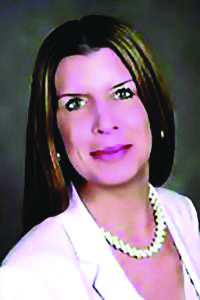
Edward Jones Financial in Queensbury.
By Meghan M. Murray
Your employer-sponsored retirement plan is a valuable asset. But sometimes things happen that can affect the status of your plan. So, for example, if you work for a hospital that changes ownership, and you have been participating in a 403(b), 457(b) or 401(k) retirement plan, what should you do with it now?
Basically, you have four options:
Cash out your plan. You can simply cash out your plan and take the money, but you’ll have to pay taxes on it, and possibly penalties as well. So, unless you really need the funds and you have no other alternative, you may want to avoid liquidating your account.
Roll your account into your new employer’s plan. If it’s allowed, you can roll over your old 403(b), 457(b) or 401(k) plan into your new employer’s plan. Before making this move, you’ll want to look at the new plan’s investment options (which should be numerous) and fees (which should be low). If you move the money directly to the new plan, you won’t be taxed at the time of the transfer, and your funds can continue to grow tax-deferred.
Leave your plan with your old employer. If your account balance is above a certain level, you may be able to leave your plan with your old employer’s plan administrator. You won’t be able to contribute any more money to the plan, but if you like the investment options you’ve chosen, keeping the money in your old plan might be a viable choice.
Advisors: Hold The Course With Retirement Plans, Even If Investment Markets Are Shaky
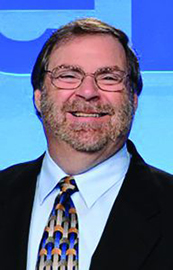
Courtesy Ameriprise Financial Services
By Susan E. Campbell
Whether the forecast for the economy and the investment markets is good, bad, or middle-of-the-road, retirement professionals agree that staying the course is the best course.
“The number one thing for 2020 is, in a word, uncertainty,” said Don Tenne, a financial planner with Ameriprise Financial Services and based in Glens Falls.
“Tariffs, elections, China and other international uncertainties are things that tend to slow down the market even though the economy is doing very well,” said Tenne.
Markets are driven by not only by fundamentals but also by investor psychology, which can be impacted by alarmist media, he said.
“The media says a recession is coming, but we don’t know when,” he said. “Many experts say recession may be one to six years ahead. So we see the stories, and then they go away.”
Business Report: Beware Of Retirement Sprawl
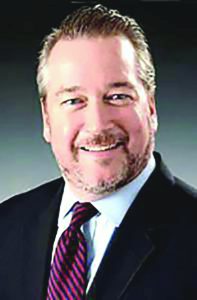
By David L. Cumming
As we move through our career, we often accumulate a number of different retirement accounts: A traditional IRA here, a rollover IRA there, and two or three scattered 401(k) accounts left in the plans of former employers.
As the accounts add up, it can become difficult to get a clear picture of your overall retirement preparedness.
Consolidating your retirement accounts into one central account can help you make sure your retirement assets are invested appropriately for your overall goals, better track the performance of your holdings and, in some cases, discover more investment choices and potentially incur lower fees.
However, consolidating retirement accounts into one account may not be right for everyone. Before taking any action, you should carefully compare your potential options in order to reach an informed decision about what makes the most sense for you.
AARP: Cost Of Drugs Is Rising Dramatically
Retail prices for 267 brand-name drugs commonly used by older adults surged by an average of 5.8 percent in 2018, more than twice the general inflation rate of 2.4 percent, according to new AARP Public Policy Institute (PPI) data released in November.
The annual average cost of therapy for one brand-name drug ballooned to more than $7,200 in 2018, up from nearly $1,900 in 2006, the study said.
“There seems to be no end to these relentless brand-name drug price increases,” said Debra Whitman, executive vice president and chief public policy officer at AARP. “To put this into perspective: If gasoline prices had grown at the same rate as these widely-used brand-name drugs over the past 12 years, gas would cost $8.34 per gallon at the pump today. Imagine how outraged Americans would be if they were forced to pay those kinds of prices.”
Financial Advisers Help Clients With Valuable Year-End Advice About Retirement Planning
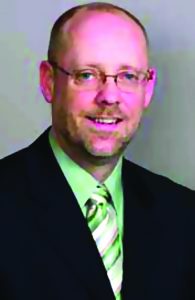
Courtesy Whittemore Dowen and Riccaiardelli
By Susan E. Campbell
December is good time for business people to meet with investment, accounting and tax professionals to look at the year behind and the one ahead.
At Paul Dowen’s office, Whittemore Dowen and Riccaiardelli, LLP in Queensbury, the team is working to manage retirement accounts in a way that maximizes deductions and minimizes tax liabilities under the new rules.
Even though all individual tax brackets, except the 10 percent bracket, are lower because of the Tax Cuts and Jobs Act, the experts can offer some tried-and-true tips for managing the tax burden.
“The biggest jump in the new tax tables is from the 12 percent bracket to 22 percent, so the challenge is how we keep more income at the 12 percent rate,” said Dowen. “The first step is to make sure the maximum amount allowed has been contributed to the company’s 401(k) plan.”
These plans must be funded by salary deductions before year-end, so time is running out to play catch-up.
“The new tax laws mean a tax cut or a break-even for retirees,” said Don Tenne of Tenne Financial Group in Glens Falls. But for small proprietors and the self-employed who file a Schedule C, there are two hefty tax breaks now in the code.
“Starting in 2018 there is up to a 20 percent deduction in taxable income for those businesses,” said Tenne. “If net profit is $200,000, for example, $40,000 is not taxed, a savings of $12-13,000 or more. That’s huge.”
With Change Is A Constant, Retirement Plans Should Stay On Course And Be Able To Adapt
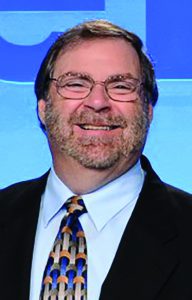
By Susan E. Campbell
Financial professionals helping clients plan for a comfortable retirement are accustomed to preparing for unknowns. But what happens when foundational systems like income taxes and health care hover on the verge of massive change?
“All the attention in the media is paid to national politics and legislation,” said Don Tenne, a registered representative and senior financial planner for Mass Mutual in Glens Falls. “But we spend our lives locally. How much passed legislation will affect my life, versus my property taxes, zoning or the traffic where I live?”
So he advises his clients, “Don’t get too caught up in tax reform or health care reform, because our lives are lived largely outside of the Washington bubble.”
While tax reform is important, the issue is not change, said Tenne, but how to make a financial plan and stay on course because times always change.
Business Report: Why Every Child Needs A Roth IRA

By Paul Curtis, CPA, CVA, CM&AA
What if your child could invest tax-free money today, and in 40-50 years take the proceeds out tax-free? Would you be interested? Almost anyone who receives compensation can open up a Roth IRA account.
There are two main types of individual retirement accounts, the traditional IRA and the Roth IRA. Traditional IRA’s allow for tax deductions for current year contributions. When distributed, the original contributions, along with any earnings, are then fully taxable. The Roth IRA allows for your contributions and earnings to accumulate tax-free. No tax deduction is allowed for contributions, unlike the traditional IRA, but you never have to pay taxes on qualified distributions.
Retirement Planning Professionals Say Start A Plan Early In Life And Stick To It
Greg Larkin, investment officer and financial planner for Adirondack Trust Co BY SUSAN E. CAMPBELL A retirement plan is one of the few tax advantaged savings options available to just about anybody. Still, too few take advantage of a...
As Stock Market Fears Subside, Officials Say More People Eye Retirement Plans
Mary Pat Rabin, retirement plan and services manager, Glens Falls National Bank John Conroe, investment officer and financial planner, Adirondack Trust Co By Jill Nagy John Conroe, an investment officer and financial planner at Adirondack Trust Co., is hearing...
